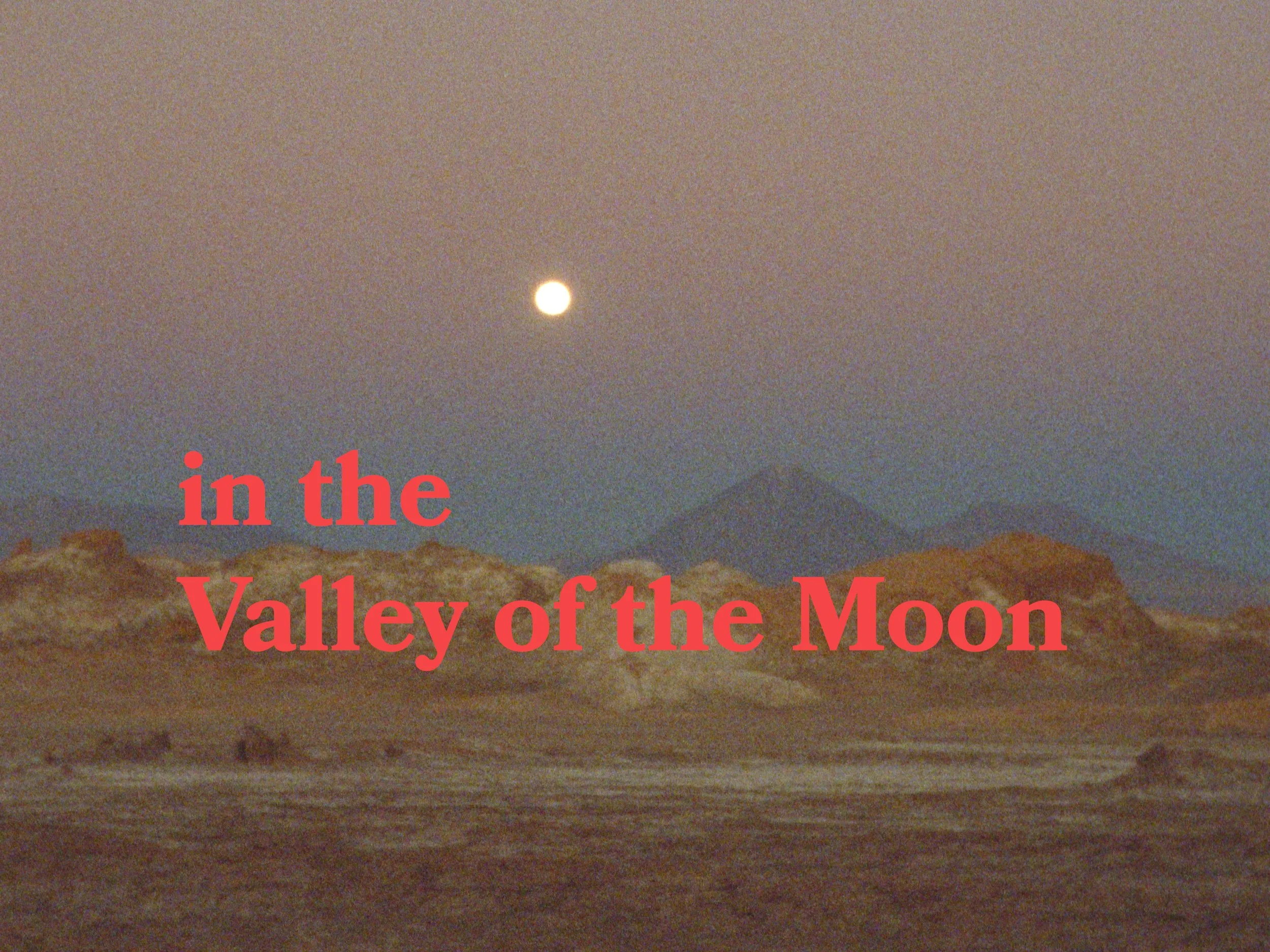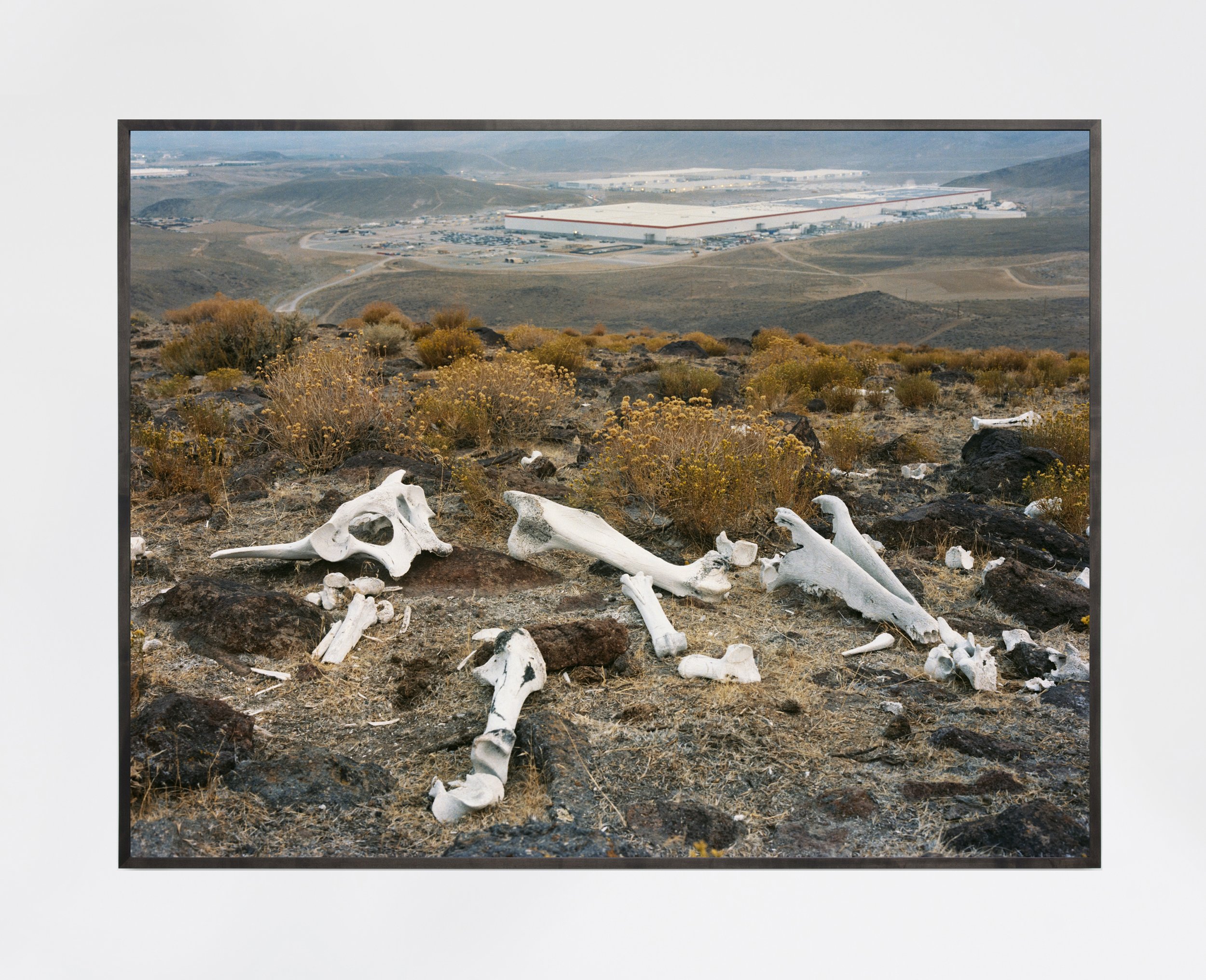in the Valley of the Moon
in the Valley of the Moon investigates the paradoxes of scientific developments and ecological innovations, linking together mineral deposits in Chile’s Atacama Desert, food production, chemical warfare and the environmental toll of green energy. This work begins with revisiting the Haber-Bosch method, a scientific discovery of the early 20th Century which allowed for the creation of a synthetic version of sodium nitrate. This innovation was used to create fertilizer for food sources, something necessary as the growth of the world population superseded the subsistence that natural nitrate resources could provide. It is estimated that two-fifths of the world’s population would not have survived if it wasn’t for this discovery. Fritz Haber received a Nobel Prize for his innovation, but soon put this chemistry to use in the development of poisonous gases during the First World War. Distraught at her husband’s contribution to the war effort, Clara Immerwahr, a pacifist and the first woman to receive a Doctorate in chemistry in Germany committed suicide. Meanwhile, as a result of this discovery, the mining sites in the Atacama Desert in Chile, which had supplied the world with natural nitrate deposits, became ghost towns as the industry collapsed. Today the Atacama Desert is experiencing a mining renaissance as it has become one of the world’s leading producers of copper, lithium and rare-earth minerals. As the human population increasingly relies on these resources to feed the appetite for electronics and to grow electric vehicle industries, the consumption of these natural mineral deposits has taken an environmental toll on Atacama’s already fragile ecosystem. This work weaves together these histories and current realities to comment on what is gained and lost in the name of technological progress.
“in the Valley of the Moon”, 16mm film transferred to 4K video, Surround Sound, 20:27, 2022 (3 minute clip - full video available on request)
“in the Valley of the Moon,” Installation View: Galway Arts Centre, Galway, Ireland, 2022
“in the Valley of the Moon,” Still from 16mm film transferred to 4K, Color, Surround Sound, 20:27, 2022
“in the Valley of the Moon,” Still from 16mm film transferred to 4K, Color, Surround Sound, 20:27, 2022
“in the Valley of the Moon,” Still from 16mm film transferred to 4K, Color, Surround Sound, 20:27, 2022
“in the Valley of the Moon,” Still from 16mm film transferred to 4K, Color, Surround Sound, 20:27, 2022
“A Harvest of Death,” 48x63in, Archival Pigment Print, 2023
in the Valley of the Moon was made with the generous support from the Canada Council for the Arts. Special thanks to La Wayaka Current artist residency for providing me with assistance, community and guidance while staying in Atacama, SQM in the Salar de Atacama for allowing me to film, photograph and tour their facilities, and the Fritz Haber Institute and the Archives of the Max Planck Society in Berlin for allowing access for filming and research.






